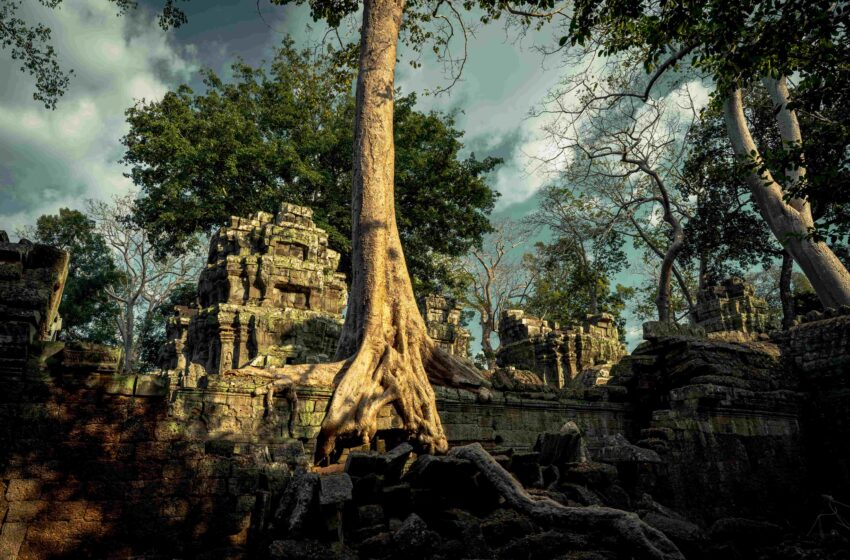
Cambodia’s Only Travel Guide You Need For A Great Trip in 11 Easy Steps
- Destinations Asia
Cruisit Team
- June 25, 2022
- 0
- 4726
- 77 minutes read
Cambodia’s Background
Cambodia’s history dates back to the 10th through the 13th centuries when the Angkor Empire reigned supreme over most of Southeast Asia. Then, Thai and Cham (modern-day Vietnam) invasions devastated the empire, ushering in a protracted era of collapse. Later, Cambodia was put under French protection by the monarch of Cambodia in 1863, and it became part of French Indochina in 1887. After the Japanese occupation during WWII, Cambodia gained independence under the French Union in 1949 and complete independence in 1953.
After a five-year war, Communist Khmer Rouge troops conquered Phnom Penh in April 1975 and ordered the evacuation of all cities and towns. Under the Khmer Rouge dictatorship, at least 1.5 million Cambodians perished as a result of executions, imposed difficulties, or famine. A Vietnamese assault in December 1978 forced the Khmer Rouge into the countryside, resulting in a 10-year Vietnamese occupation and nearly 13 years of civil conflict.
The Paris Peace Accords of 1991 stipulated democratic elections and a truce, which the Khmer Rouge did not completely implement. Elections supported by the UN in 1993 helped restore some semblance of normalcy. Factional conflict in 1997 brought the first coalition government to an end. The second round of national elections in 1998 resulted in a return to political stability. Although the July 2003 elections were generally calm, it took a year of talks between competing political groups to create a coalition administration.
Cambodia today is the successor state to the powerful Khmer kingdom, which dominated most of what is now Laos, Thailand, and Vietnam during the Angkorian period, is now nestled between them. The Khmers have gone to hell and back, enduring years of slaughter, poverty, and political unrest. They are fighting hard to win, relying on their seemingly impenetrable spirit and contagious positivity. No visitor leaves without love and compassion for the people of this fascinating land.
The renowned temples of Angkor, buildings unparalleled in magnitude and majesty in Southeast Asia, house the ruins of this kingdom. The initial sight of Angkor Wat, the ultimate embodiment of Khmer creativity, is breathtaking, rivaled only by a few select locations on the planet, such as Machu Picchu or Petra. Although Cambodia had a dreadful past, in the last decade, it has gained immense popularity among travelers.
Thousands of people visit Cambodia every year to marvel at Angkor Wat, just outside Siem Reap, Cambodia’s most famous heritage site. However, it is sometimes mistaken for the entirety of the Angkor Archaeological Park, although it is only one of numerous sites inside the park. Nevertheless, since Angkor is associated with the Angkor Archaeological Park, it is also synonymous with Cambodia as a whole.
“This attractive yet mysterious temple empire has a charm that casts a spell on guests. Travelers to Cambodia will be inspired to consider what occurs when the old and contemporary worlds combine with its urban setting, adventures in the mountains, and welcoming Cambodians.“
Although Cambodia is no longer an uncharted nation, it still has numerous undiscovered areas offering off-the-beaten-path experiences. While many visitors travel from Thailand for 2 to 3 days to explore Angkor Wat and then return to Thailand, Angkor alone is well worth the journey, but, travelers miss so much more of Cambodia. Outside of Angkor Wat, the country is a popular location for bicycle excursions due to its stunning and relatively flat topography. Many tourists plan scheduled bicycle trips before embarking on their journey to Cambodia. So, as a rule of thumb, don’t travel to Cambodia or Angkor only to see Angkor Wat. If you add the outlying temples, a week or two could easily be spent at Angkor. That is, assuming you won’t get “templed out.” Furthermore, many of Cambodia’s other distinctive sites and activities warrant a lengthier visit, So, allow plenty of time to explore, and you will be amazed at how much Cambodia has to offer.
You can enjoy many activities in Cambodia, including going by boat between Siem Reap and Phnom Penh across Tonlé Sap Lake, which contains gorgeous mangrove forests, and visiting floating villages. At Mekong you can swim with one of the last river dolphins, the endangered Irrawaddy dolphins. You can also simply unwinding on a beach in Sihanoukville or on one of the offshore islands, a fantastic experience.
The Killing Fields outside of Phnom Penh are highly recommended for gaining an understanding of the atrocities of the Pol Pot government and the Khmer Rouge. The bustling yet captivating capital of Phnom Penh is a renovated city that has received accolades for its gorgeous riverbank location, cultural revival, and world-class wine and food scene.
Siem Reap’s second city, with its sophisticated cafés and vibrant nightlife, is as popular as the adjacent famed temples. And Battambang, reminiscent of Siem Reap before heavy tourism, enchants with a burgeoning modern art scene. In Cambodia’s countryside, experience the rhythm of rural life and the scenery of sparkling rice terraces and swaying sugar palms.
The South Coast is surrounded by tropical islands studded with fishing villages. The Cardamom Mountains lie inland, part of a huge tropical wilderness that is home to elusive animals and a gateway to burgeoning ecotourism excursions. The northeast is a world unto itself, with hilly terrain that are home to Cambodia’s highland people as well as a plethora of natural attractions and animals. The Mekong River, which runs through the nation, is home to some of the region’s last freshwater dolphins.
Independent travelers rejoice; Cambodia and is a solo traveler’s destination to admire, with its simple transportation options that you can take across the nation on your own. Other noteworthy sites to visit in Cambodia include the area’s beaches, which are significantly less crowded than those in neighboring Thailand. Sihanoukville is the most popular beach in Cambodia. Phnom Penh is the country’s dynamic capital city, with a rich history, several temples, and a friendly populace. If possible, plan your vacation to coincide with one of the city’s many festivals.
Even by Southeast Asian standards, Cambodia is an extremely affordable tourist destination. It is not difficult to locate comfortable hotels at an affordable price. Food is likewise reasonably priced, and there are several eateries ready to please the visiting hordes in the major tourist destinations. There are restaurants that provide western cuisines such as pizza, spaghetti, and burgers. If you’re on a tight budget, you should avoid these western selections. They are frequently far more costly than Cambodian food and seldom quite as delicious. Private transportation between cities can be booked for a low fee, but public transit is surprisingly good and quite economical. Taking the local buses and engaging with the people is part of the experience.
- In Siem Reap, see the famed Ankor temples.
- Visit Sihanoukville or Kep’s beaches.
- In Kampong Phluk, take a boat trip amid mangrove woods and floating settlements.
- Learn more about Pol Pot and the Killing Fields in Phnom Penh
- Preah Vihear Temple is located between Thailand and Cambodia.
- At Kratie, try to glimpse the rare Irrawaddy Dolphin.
- Relax by the river in Kampot.
- On Koh Kong Island, you can find the ideal getaway.
- At Ban Lung, you can go off the beaten path (sort of).
- In Battambang, take a ride on the bamboo railway.
- Visas-on-arrival cost US$20 (subject to change) plus an extra $1-$2 if you do not have two passport-sized pictures. Land crossings from neighboring nations may necessitate more bargaining for higher prices. Consider the regular visa for longer or multiple-entry stays.
- Outlying temples are not included in the Angkor Archeological Park entrance price. If you hired a tuk-tuk/taxi driver for a certain daily charge, prices to distant locations will be more than that daily rate. Most drivers will inform you ahead of time, while some will inform you after the journey.
- Use mosquito repellent in parts of Cambodia where Malaria, Dengue, and Japanese Encephalitis are prevalent.
- Landmines are generally not a concern to visitors going in well-known places, but pay attention to any warning signs and use caution while traveling in remote areas where landmines may still remain off the beaten route.
- If you are wearing a sleeveless shirt, shorts, or skirt that the guards judge unsuitable for temple clothing, you will be turned away.
- Be wary of people (even authoritative individuals) and youngsters who attach themselves to you and behave as guides without prior arrangement. They will demand payment, and although some might be extremely helpful and are worth paying, others are out to defraud you.
- Many individuals choose to enter Cambodia through Vietnam since it is less expensive.
- The country runs on the basis of bargaining for anything. Your hotel room is also negotiable.
- On their vacations to Cambodia, some individuals volunteer. Just be careful to select a respectable firm.
- Cambodia’s national currency is the riel, but they also take USD and Thai baht in parts bordering Thailand.
- Get a krama as soon as you arrive to shield yourself from the sun; it also serves as a towel.
- Pack light clothing and shoes for Cambodia.
- Always be polite when visiting a Buddhist site.
- Local greeting in Cambodia entails clasping your hands together in a prayer-like gesture, and it is a preferred method to begin your journey.
- In Cambodia, local hospitals are as basic as it gets
Crime & Scams in Cambodia
The most prevalent crime is bag or phone snatching, which is generally committed by robbers on motorbikes. Smartphones are a particular target, so avoid using your phone on the side of the road, particularly late at night. Walking or biking alone late at night is not recommended, since there have been multiple reports of unaccompanied female travelers being molested in remote places after dark.
Most scams are rather harmless, involving a small commission for local drivers here and there. There have been one or two stories of police set-ups involving planted narcotics in Phnom Penh, although they appear to be extremely unusual and mainly involve company owners. Beware of the Filipino blackjack scam. Don’t engage in any gambling with seemingly amicable people unless you want to part with your money.
Because there is a lot of bogus medication moving around the region, always purchase prescribed medications from reputable pharmacies or clinics. If you are given chemical medicines on the street in Cambodia, be very cautious since they are not only illegal but may be contaminated with a variety of hazardous and harmful toxins.
Because of the existence of landmines and unexploded ordnance (UXO) in certain rural regions, it is critical to stay on well-marked pathways. Keep a watchful check on tiny children in rural regions to ensure they do not stray or go off-road while you are cycling.
Roads have greatly improved in recent years. However, conditions can vary greatly from the dry to the rainy season. Although motorbikes are a common form of transportation in Cambodia, do not attempt to drive one if you are inexperienced. The snarled traffic in the larger towns and cities is not for the inexperienced.
Healthcare in Cambodia While Traveling
Hospitals in the provinces are quite inadequate, and anyone who sustains a major accident or sickness while in Cambodia may require an emergency evacuation to Bangkok. If you become extremely ill in Cambodia, you should go to Phnom Penh or Siem Reap, since these are the only areas in the country that provide adequate emergency care. The pharmacies in the larger towns are surprisingly well supplied, and you don’t need a prescription to acquire anything from antibiotics to antimalarials.
When it comes to tap water, be cautious and avoid it wherever feasible or boil it if needed. In Cambodia, bottled water is commonly accessible, and many hotels and guesthouses have refill tanks. Ice is typically safe, however, you may want to avoid them just in case.
Before every trip, make sure you are up to date on all routine vaccinations. Among the key recommended vaccines globally are chickenpox (Varicella), diphtheria-tetanus-pertussis (DTP), influenza (flu), measles-mumps-rubella (MMR), polio, and shingles.
When visiting Cambodia, you are not required to purchase travel medical insurance. However, it is always important to have comprehensive medical coverage when traveling because you never know what you could encounter while overseas. Health facilities are limited in Cambodia and if you’re ill or injured, you’ll need to be evacuated, so make sure your insurance covers this.
Cambodia has three seasons and they are hot, sizzling, or burning However, there are distinct dry and wet seasons that define the harvest cycle and significantly alter the character of the climate in this fascinating Southeast Asian country, making it a bit cooler for those who want to enjoy their trip to Cambodia without being burned.
Shoulder Season
Another great time to go to Cambodia is during the shoulder season, which runs from July to early September. Despite the fact that it is in the middle of Cambodia’s wet season, it normally does not rain much, However, there is enough water to fill the Tonle Sap lake. Typically it rains once a day at dusk, the landscape is a blaze of green, and many hotels and resorts offer significant discounts.
Because of the extended school vacations and low hotel and resort rates, it’s a perfect time for families in the Middle East, Europe, and North America to go to Cambodia during these months. Angkor is also much less crowded during the “green season,” when the moats are full of water and many of the temples are covered in moss and lichen. The biggest disadvantage of traveling during the shoulder season is that it may rain fairly severely on the coast, making Ko Rong and other lovely islands surrounding Sihanoukville extremely wet and windy. But from July through September, Cambodia sees festivities and many backpackers that take advantage of lower overall prices.
High (Peak) Season
Cambodia’s main and high tourist season is from November to March, coinciding with the country’s dry season, which runs from November to early May. However, the months of November to February experience a milder environment with excellent temperatures, making it great for weather and temple exploration. This is also the winter season in Southeast Asia, and temperatures in Cambodia are much more Mediterranean.
When the temperature drops below 20°C (68°F), Cambodians run for their jackets. This makes touring the temples more delightful, but it is also the busiest season at Angkor, with dry weather, a dazzling blue sky, and cumulus clouds. From the end of February through the end of May, when daily temperatures can approach 40°C (104°F), the landscapes seem arid.
In Cambodia, the busiest period in the season is from January through March. Many hotels are completely booked long in advance, particularly around the Christmas and New Year holidays, as well as during Chinese New Year, which follows the lunar calendar and falls in January or February.
Off-Season
The rainy season in Cambodia normally lasts from June to October, coinciding with the southwest monsoon, although it’s not always a horrible time to visit. When it comes to weather, these are not the ideal months, but it’s a great period for huge discounts during the low season from April to June and from September to October. Temperatures reach sizzling levels in April and May, and September and October are damp, rainy, and wet. However, this is the period when hotels issue their greatest special deals. If you intend on staying at five-star hotels and luxury resorts, you may save a lot of money. The rainiest months are September and October, yet they also provide lush scenery and dramatic cloud formations. April to June brings celebrations and the beginning of the rainy season.
Monsoons can cause significant floods from May to December. The northeast monsoon season lasts from December to April, bringing bright and dry weather, especially in January and February. From May to November, the rains fall when the winds shift into the southwest monsoon in Cambodia.
By Plane
Air travel is the quickest method to get to and from Cambodia. Most visitors may obtain a visa upon arrival at the airport. Cambodia has two international airports: Phnom Penh International and Siem Reap International. If you fly into the country, you can obtain an E-Visa ahead of time, or you can obtain a 30-day tourist visa at the airport if your nationality qualifies. Check the visa requirements in Cambodia before you travel.
Cambodia Direct flights are available from Angkor Air, Emirates, Qatar Airways, British Airways, Aeroflot, Etihad Airways, Singapore Airlines, and Korean Air. You cannot travel straight into Cambodia from Europe, North America, Australasia, or South Africa, therefore you must connect in the Middle East, Southeast Asia, or East Asia.
By Car
You can also enter Cambodia from neighboring nations via its land borders with Thailand, Vietnam, and Laos.
Crossing from Vietnam to Cambodia is possible via Bavet/Moc Bai, which is one of the simplest and fastest land crossings. This border point is frequented by visitors and so quite quick in processing visas on arrival, with bus services serving Phnom Penh and Ho Chi Minh City.
You can enter Cambodia from Thailand via Aranyaprathet/Poipet. This busy and noisy border serves a large number of people. Because of the huge volume of travel, the lines can get lengthy, and the cost of transportation is frequently exaggerated. You can also enter from the Hat Lek/Ko Kong side. For beachgoers going between Thailand and Vietnam, this is the most likely entrance point. Visas may be purchased online or ahead of time; queues are usually short and quick. Finally, you can look into Chong Jom/O Smach. Travelers from Surin to Siem Reap utilize this border crossing the most. It provides comprehensive visa procedures, although the journey to Siem Reap might take several hours once you pass the border.
You can enter from Laos via Veun Kham/Dom Kralor. Because this is the sole land border crossing between these two nations, it may get rather congested. This border does not see much international tourists, and it is largely utilized by residents who travel often between the two nations. Both nations have visa services accessible.
By Bus
You can take a 6 hour bus from Ho Chi Minh, Vietnam, offered by The Sinh Tourist or Mekong Express. The buses from Laos take too long, but if you don’t mind spending 19+ hours in a bus, Chanthachone Transportation operates from the Southern Bus Station in Vientiane. From Thailand, buses go from Bangkok Mochit Bus Terminal to Cambodia, taking 12 to 14 hours and operated by Nattakan Transport, or from Bangkok Khao San Road by Travel Mart.
By Boat
Boats can be used to travel, but they do not run on a regular basis as roads have developed and have become a more efficient way of traveling in Cambodia.
By Plane
Domestic planes connect Phnom Penh, Siem Reap, and Sihanoukville, but you’ll lose out on the experience of driving. While there is an environmental cost, domestic planes are an excellent option to escape Cambodia’s chaotic roads. The country’s three operational airports at Phnom Penh, Siem Reap, and Sihanoukville are well connected by shuttle flights, and air travel in Cambodia is normally inexpensive unless you book at the last minute.
Airlines come and go in Cambodia, with many of the younger carriers focusing on the swift Chinese market. Reliable alternatives include Cambodia Airways, Cambodia Angkor Air, and Lanmei Airlines, all of which offer a combination of local and international flights to other Asian hubs.
By Car
For those who value time over money, hiring a private vehicle or 4WD with a driver is a cheap choice, whilst renting a motorbike is a very gratifying way to explore for experienced riders. Car and motorcycle rentals are quite inexpensive in Cambodia, and many visitors love the freedom to see out-of-the-way areas and stop whenever they want. It is more expensive than taking a bus or minivan, although expenses might be reduced if you go in a group.
In Cambodia, cars can usually only be leased with a driver. This might be a practical method to travel between cities and tour Phnom Penh and Angkor. Some travelers with larger budgets hire automobiles or 4WDs with drivers to tour the regions. Hiring a car with a driver will cost US$40-50 per day in (or around) large cities, increasing to US$60 or more, including petrol, for trips in rural areas.
It is also feasible to tour Cambodia by renting a motorbike, however anybody intending a longer journey should first check out the bike about town for a day or so to get acclimated to the traffic and ensure the bike is in excellent working order. Motorcycles may be rented in Phnom Penh and most other tourist cities for US$4-6 per day (or twice that on the islands), while a 250cc dirt bike will cost US$15-25.
Officially, driving a car requires a Cambodian driving license, thus self-drive hire is uncommon. Motorcycles with displacements less than 125cc do not require a license to hire. Fuel is widely available across the nation – even the most remote settlements typically have stalls by the roadside selling petrol out of repurposed Johnnie Walker or Fanta bottles – but it is quite pricey, costing US$1-1.50 per liter.
By Train
Trains connect Phnom Penh to the coast and the Thai border at Poipet in the northwest, but departures are few. Cambodia’s rail infrastructure has been rebuilt in recent years, with Royal Railways providing limited passenger services on weekends. The southern line connects Phnom Penh and Sihanoukville via Kampot and Takeo, with Saturday morning departures. The northern line connects Phnom Penh to the Thai border at Poipet through Pursat and Battambang.
By Taxi
Share taxis, in which each passenger pays for a seat and the vehicle leaves when it is full, are losing momentum to express minivans in these days of improved highways. It is advantageous to travel in groups while utilizing share taxis since you may purchase extra seats to make the ride more pleasant. It is crucial to realize that not all routes have set pricing, so you may have to negotiate a ticket. Ride-hailing applications like Uber, Grab, and PassApp have made it much easier to hail a cab in big towns and cities. Guesthouses, hotels, and travel agencies can also arrange for cheap vehicle rentals for sightseeing in and surrounding towns.
Airport taxis are offered in the airports of Phnom Penh, Siem Reap, and Sihanoukville. Some taxis in Phnom Penh have meters; otherwise (or if the driver refuses to use the meter), agree on a fee before you begin your journey.
The cyclo (bicycle rickshaw or pedicab), as in Vietnam and Laos, is an inexpensive method to move about cities, however these vehicles are becoming endangered. Fares range from $1 to $3 if you can locate one; customers sit up front, with the driver behind, like a large pedal-powered stroller.
In Cambodia, there are two types of tuk-tuks (motorized auto-rickshaws), both of which may be hired via ride-hailing applications such as Grab and PassApp. The remork-moto is a canopied trailer connected to the rear of a motorbike that allows two persons to travel in luxury. These are an excellent method to see temples since they provide a cool air and some protection from the weather.
In recent years, a substantial fleet of auto-rickshaws produced in India has infiltrated Cambodia’s metropolitan environment. They are quicker than their remork-moto counterparts, but more smaller and with less ventilation due to the wraparound cab.
Motos are motorcycle taxis that cover short trips in towns and local hops in the countryside. They are a convenient method to go short distances in towns and cities, but riding in traffic may be frightening. Prices begin at $1 to $2, depending on distance traveled. To minimize surprise overcharging, it’s preferable to negotiate a fee ahead of time, especially at night.
By Bus
Buses and minivans are the most common modes of transportation for tourists, linking all major towns, cities, and tourist destinations. In Cambodia, there are several possibilities for road travel. Large and luxurious air-conditioned buses and fast express minivans are the most popular alternatives on sealed highways. A shared cab or a local minibus is the best method to go about the rest of the nation.
All of Cambodia’s major cities are now well connected to Phnom Penh by modern express buses that drive on sealed highways, but if you’re traveling from one end of the nation to the other, you may need to change buses in Phnom Penh or another hub, which might add time to your entire route. While it does not cover the whole bus network in Cambodia, Bookmebus is a reliable bus-ticket booking site.
Express minivans, unlike congested local buses, have a one-seat/one-passenger policy and are quite comfortable. However, some drivers appear to believe they are competing in a Formula 1 qualifying race So wear a seatbelt if you have the choice. Most provincial routes are served by older minibuses, although tourists seldom use them since they are excruciatingly slow and frequently packed.
By Boat
Boat travel is less popular than it once was, although there are several swift speedboat services to the islands off the South Coast, as well as boats along the Tonlé Sap, Mekong, and Sangkae Rivers. Given the significant improvements to the road network, Cambodia’s 1900km (1180 miles) of navigable rivers are no longer as important for visitors as they previously were. The Mekong and Tonle Sap rivers are accessible all year, so taking a boat from the capital to Siem Reap is an option. Between Siem Reap and Battambang, there are also picturesque boat trips. However, most interior transportation is now done by road.
The speedboats that zoom from Sihanoukville and other coastal towns to the Southern Islands, as well as the high-speed catamarans that travel to Koh Rong and Koh Rong Sanloem, are the most widely utilized by visitors. Sunset boat tours on the Mekong River in Phnom Penh are another must-do when visiting the city.
SIM Cards & Calls in Cambodia
Smart Axiata, Metfone, and Cellcard are Cambodia’s three largest telecom communication carriers. There are a few alternative carriers, such as qb and Yes Seatel, but their subscriber bases are so small that they frequently do not give (decent) countrywide service. These organizations provide a variety of packages for travelers, ranging from $1 to $5 for 1 GB to 4 GB with 7 days to 30 days validity depending on the one you pick.
You also have the option of purchasing a prepaid eSim card like from Airalo, SimCorner, or Nomad. The companies provide data-only plans to put on a phone that is eSim ready, so make sure your phone is compatible. It is also possible to opt-in for a WiFi Hotspot from Solis. Check before you travel because they service certain destinations. Airalo by far has the most coverage of almost 180 countries.
Local Internet & WiFi in Cambodia
If you need to use a computer with an internet connection, the cheapest alternative is to call your hotel’s reception and ask if they provide free computer service or free Wi-Fi if you have a laptop or other device to connect with. If you require an Ethernet connection, you may go to an internet cafe in Phnom Penh or Siem Reap for $1-3 per hour. Wifi is usually included in the price of a hotel, hostel, or apartment during your stay.
Top Places in Cambodia

Angkor Wat
Angkor Wat is a temple complex in northwest Cambodia. The complex, a UNESCO World Heritage Site, and popular tourist site is a national symbol and sacred site for Cambodian Buddhism. A quincunx of four towers surrounds the temple’s central spire, which rises 65 meters above the ground and is split into three rectangular galleries, one elevated above the next. It was initially dedicated to the Hindu god Vishnu before becoming a Buddhist temple around the end of the 12th century. It is meant to represent Mount Meru, the Hindu and Buddhist devas’ cosmological dwelling. It is the world’s largest religious site, 3 times the size of the Vatican.
Ta Prohm
Ta Prohm is the modern name for a temple in Siem Reap, Cambodia, that was largely built in the late 12th and early 13th centuries. Khmer King Jayavarman VII built it as a Mahayana Buddhist monastery and university. UNESCO included Ta Prohm on the World Heritage List in 1992 and it is one of the most prominent tourist sites in the Angkor region. Ta Prohm, unlike other Angkorian temples, remained practically unchanged since its discovery: the gorgeous and atmospheric combination of trees growing out of the ruins and the forest surrounds has made it one of Angkor’s most popular attractions.


Tuol Sleng Genocide Museum
Tuol Sleng Genocide Museum is a museum dedicated to the Cambodian genocide. The location is a former secondary school in Phnom Penh that was utilized as Security Prison 21 by the Khmer Rouge from 1975 until its defeat in 1979. An estimated 20,000 individuals were imprisoned there from 1976 to 1979. On July 26, 2010, the Extraordinary Chambers in Cambodian Courts convicted Kang Kek Iew of crimes against humanity.
Tonlé Sap
Tonlé Sap is Cambodia’s most important freshwater lake and the biggest in South East Asia. The lake grows and contracts considerably as the seasons change. During Cambodia’s dry season, November to May, the Tonlé Sap pours into the Mekong River in Phnom Penh. However, when the year’s big rains begin in June, the Tonlé Sap’s flow reverses and a vast lake formed. Tonlé Sap is home to several Cham and ethnic Vietnamese people that live in floating settlements surrounding the lake.


Central Market
The Central Market is a market as well as an art deco monument in Phnom Penh, Cambodia’s capital, claimed to be Asia’s largest market. The brilliant yellow edifice, built in 1937, features a central dome 26 meters high, with four long arch-roofed arms fanning out diagonally over the block. Designed initially by city architect Jean Desbois, building was overseen by French architect Louis Chauchon.
7-day Itinerary in Cambodia
Day 1
Arrive at Siem Reap, Off to Angkor Wat
Depending on when you arrive your first day in Cambodia will commence accordingly. If you arrive late at night the day before or early at dawn, you’re in luck. Drop your bags or get up early and see the sun rise over Angkor Wat. As the sky becomes rich deep red, the magnificent temple will emerge, first in shadow and then in full splendor. As the first significant sight in Cambodia, you’re off to a terrific start.
If you arrive at Siem Reap at the afternoon, a close-up tour of the temple itself is best done in that time anyways, when the facade is no longer backlit and the afternoon sun begins to bathe the sculptures, towers, and reliefs in a softer direct light.

After your bleary-eyed but stunning morning experience, race over to one of the world’s most intriguing buildings, the Bayon, while the light is still soft. Hopping over this incredible structure will continue your journey’s high-impact start. The south entrance of Angkor Thom, where the Bayon is located, is the most spectacular of the four gates. The Baphuon, located about 200 meters (656 feet) northwest of the Bayon, was the major building of Angkor before the remainder of Angkor Thom was erected. After that, visit the Terrace of the Leper King.
You’ll be exhausted, overheated, and in desperate need of something cold and refreshing for lunch. Request that your driver transport you back to town to recharge your batteries.
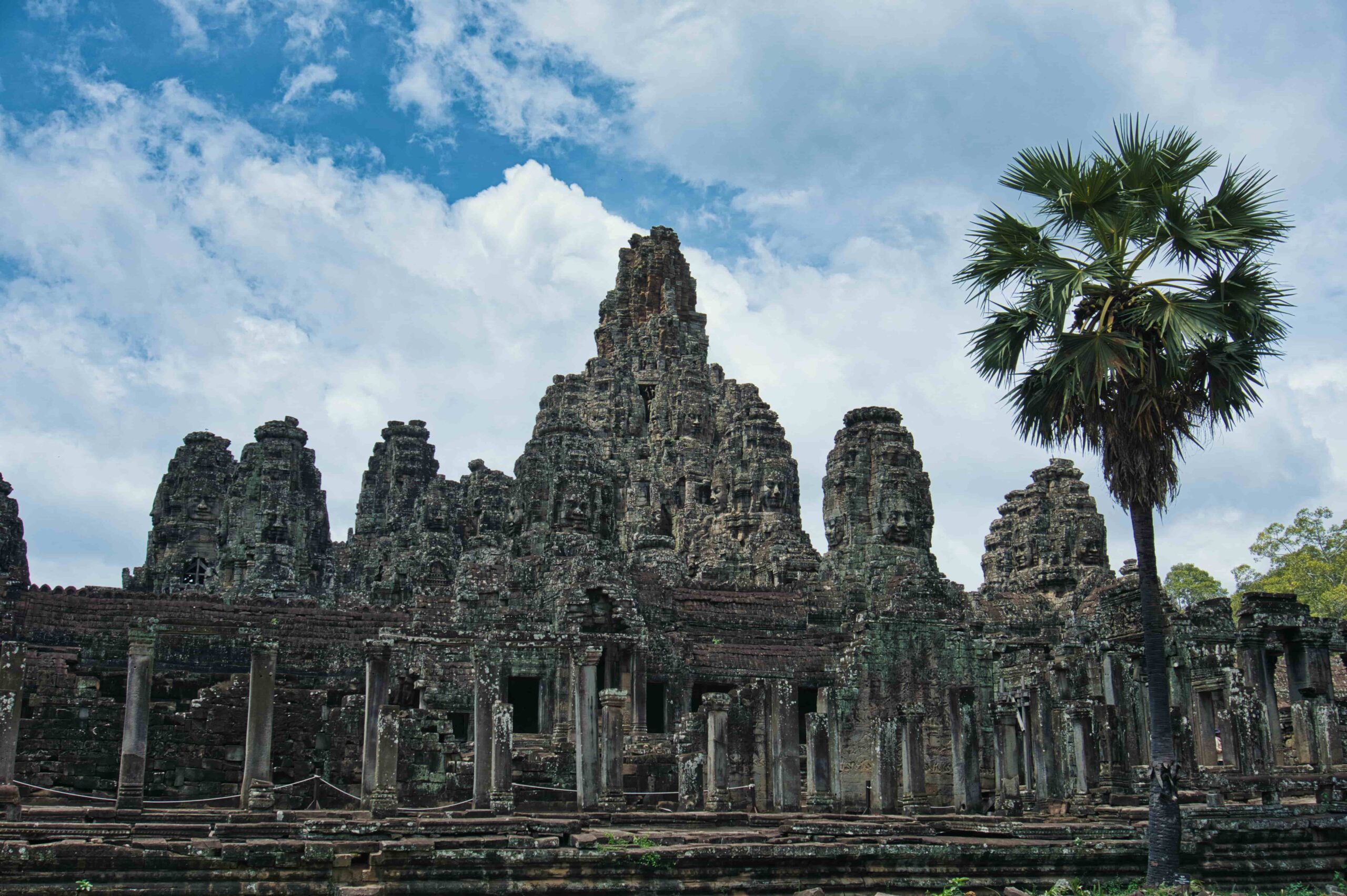
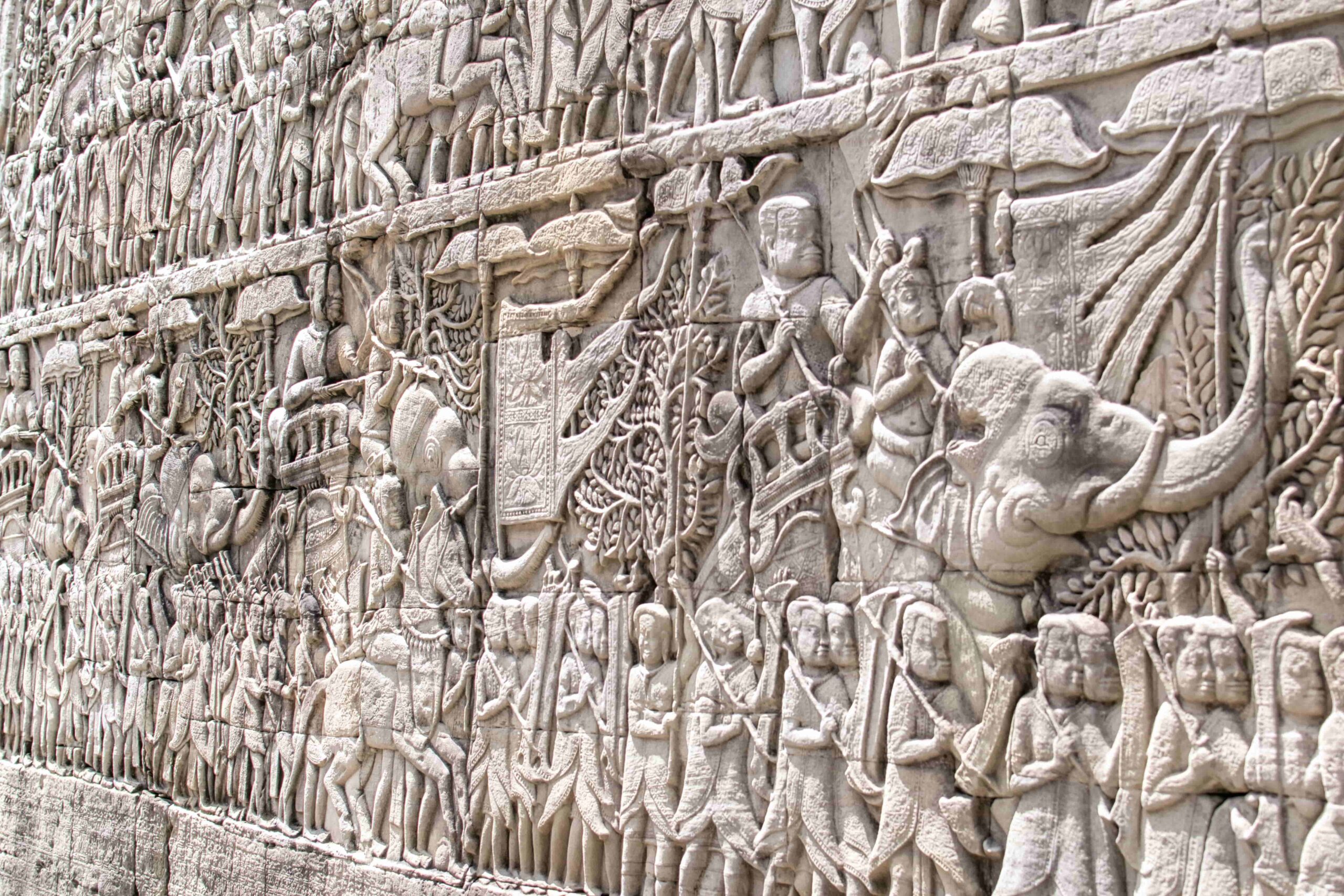
Ta Phrom is best seen in the early afternoon. Most people love this temple, which is beautifully overgrown with roots. It should be around 2 pm by now, which is the ideal time to return to Angkor Wat and view the amazing wall sculptures and soaring towers, as well as to put your shoes to the test while descending the steep and uneven steps.
In the evening, you might see some classical dance or simply enjoy Siem Reap’s vibrant restaurants, cafés, and nightlife.

- Backpacker: The Green Home, Siem Ream Pub Hostel, Eco-Home, Garden Village Guesthouse, Pool Part Hostel, Han & Daniel Villa Boutique
- Budget: Siem Reap River Side, Anou Home, Maison Gen Angkor, Antonios Villa Hotel, La Residence Blanc D' Angkor
- Mid-range: Ladear Angkor Boutique Hotel, Angkor Ry Boutique Hotel, Primefold Hotel, Central Suite Residence, Hotel Maison557
- Luxury: Heritage Suites Hotel, Royal Empire Premium, Sokhalay Angkor, Templation, Mane History Lovers, Park Hyatt Siem Reap, Raffles Grand Hotel d'Angkor, Zannier Hotels Phum Baitang, Amansara
This section will be added shortly.
Day 2
More Temples
Take in several more temples in the morning after a hearty breakfast. Preah Khan is a vast and significant structure with fascinating passageways decorated with sculptures. The temple mountain of Pre Rup rises from the flatlands, and climbing it provides not only intricate and well-preserved sculptures, but also wonderful views of the surrounding area. After that, you may return to the temple you liked most for more investigation, whether it’s Angkor Wat, the Bayon, or Ta Phrom.
The marketplaces and shops of Siem Reap are brimming with all kinds of delights, so now is a terrific time to go shopping. Hand-woven Cambodian silks, stone carvings (including replicas of those mesmerizing Bayon heads and shapely serene apsaras you’ve just spent so many hours admiring), woodcarvings, contemporary Cambodian art, handicrafts and traditional musical instruments, temple rubbings, silver betel containers, colored gems, and wickerwork are all available in town.

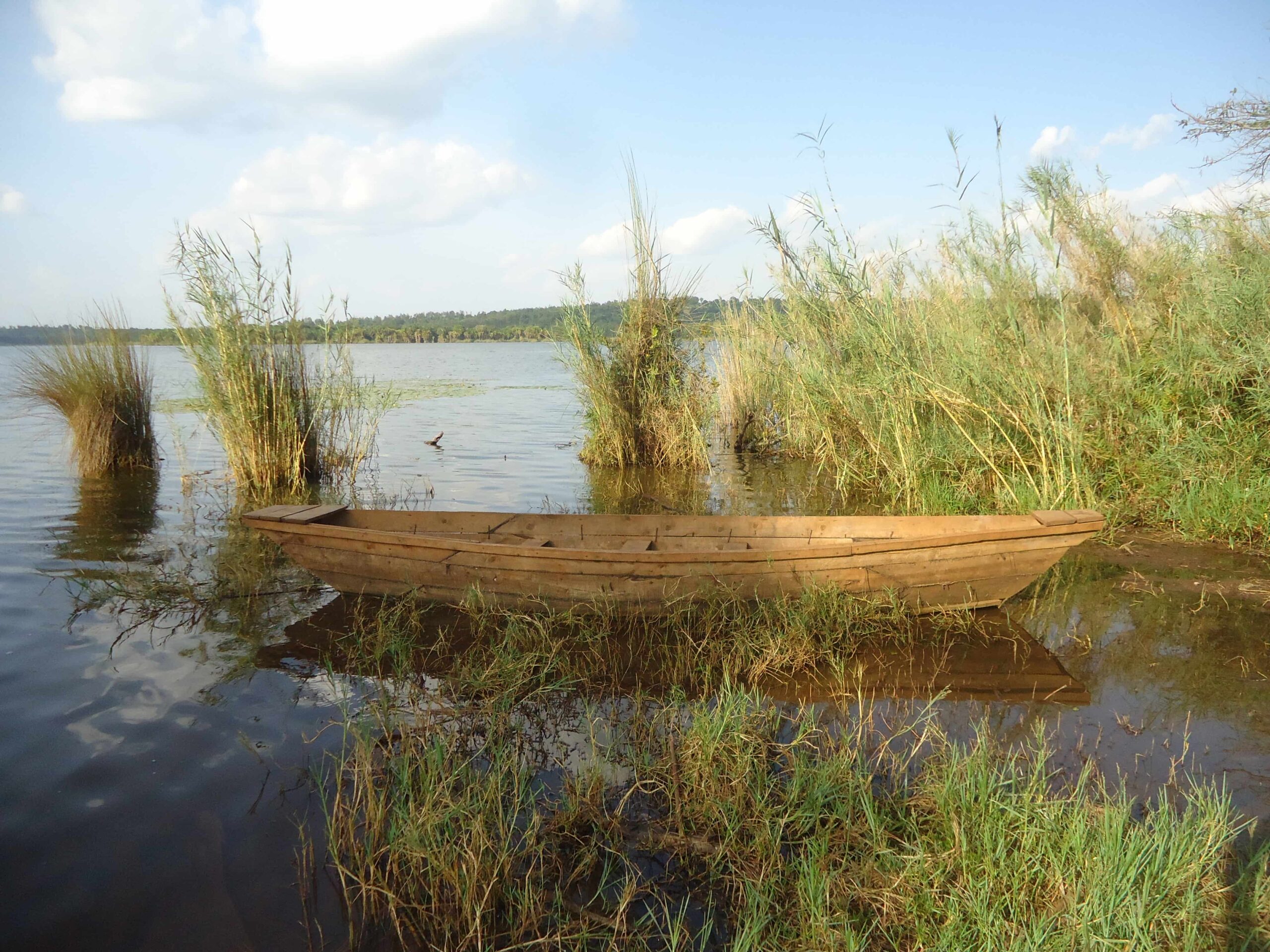

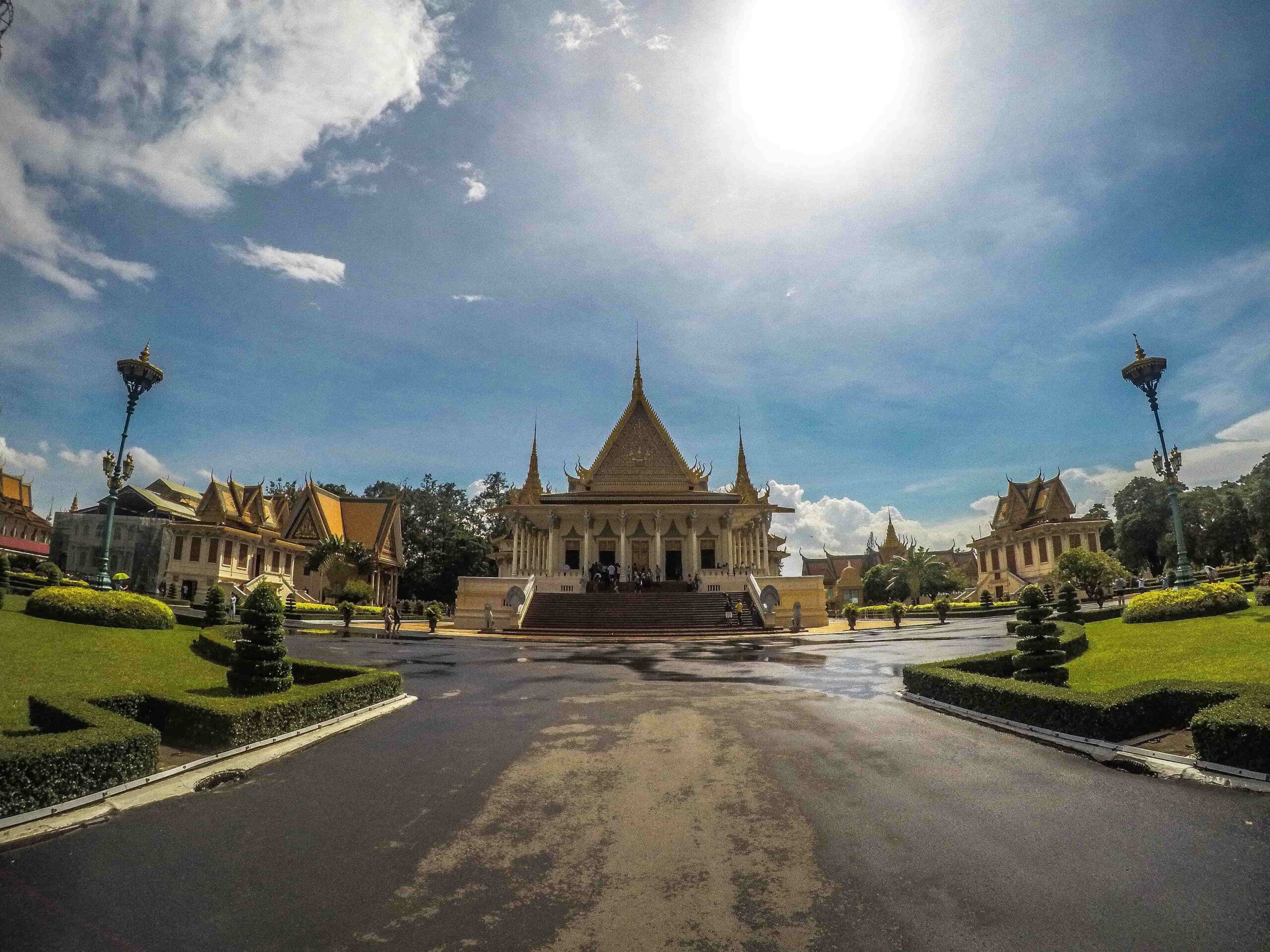
Day 3
Off to Phnom Penh
Take any transportation of your choice or fly to Phnom Penh in the morning. Note that it is a 5-hour ride by private car or around 6 hours with a bus. If you arrive in time for lunch, travel to the riverbank near Sisowath Quay to dine while adapting to the city’s frenetic pace.
After lunch, go a few yards to Street 178 and stroll through the art shops and boutiques, as well as the National Museum’s amazing collection of Angkorian and pre-Angkorian sculptures. Your next stop should be the Royal Palace, which is right next door. Then ride a bike up to Wat Phnom, Phnom Penh’s titular heart. Because you’re already close to the river, return to Sisowath Quay for some well-deserved refreshment. Keep an eye out for Phnom Penh’s sole elephant, the much-loved and adorable Sambo.
Phnom Penh has a plethora of restaurants, bars, and nightlife options. Plan your evening around your preferences.
- Backpacker: 139 Guest House, Le Vincent Hotel, Mad Monkey Hostel Phnom Penh
- Budget: Mowin Boutique Hotel & Residence, Botum Palace Hotel, Orussey One Hotel & Apartment, Sarina Boutique Hotel
- Mid-range: Samathi Lake Resort, G Mekong Hotel, Sensory Park Urban Hotel, Harmony Phnom Penh Hotel, Palace Gate Hotel & Residence
- Luxury: Mansion 51, Jungle Addition Hotel, Baitong Hotel & Resort Phnom Penh, Plantation Urban Resort & Spa, Casa Villa Independence Boutique Hotel, iRoHa Garden Hotel & Resort, Courtyard by Marriott Phnom Penh, Hyatt Regency Phnom Penh, Raffles Hotel Le Royal, Restaurant Le Royal, Rosewood Phnom Penh
This section will be added shortly.
Day 4
History & Cruise
Cambodia has a fascinating history, but part of it is plain horrible. You must visit Tuol Sleng or S21 to gain any comprehension of this location. You may leave the building sobbing at the notion of what happened to all those faces in the fading black-and-white images, but you will have a better knowledge of Cambodia. You may also follow it up with a visit to Choeung Ek, the Killing Fields where the scared victims of S21 met an unfair death. If you are traveling with small children, these locations should be avoided. It’s a difficult decision to make with older children, and it should be handled with caution since it’s all very real.
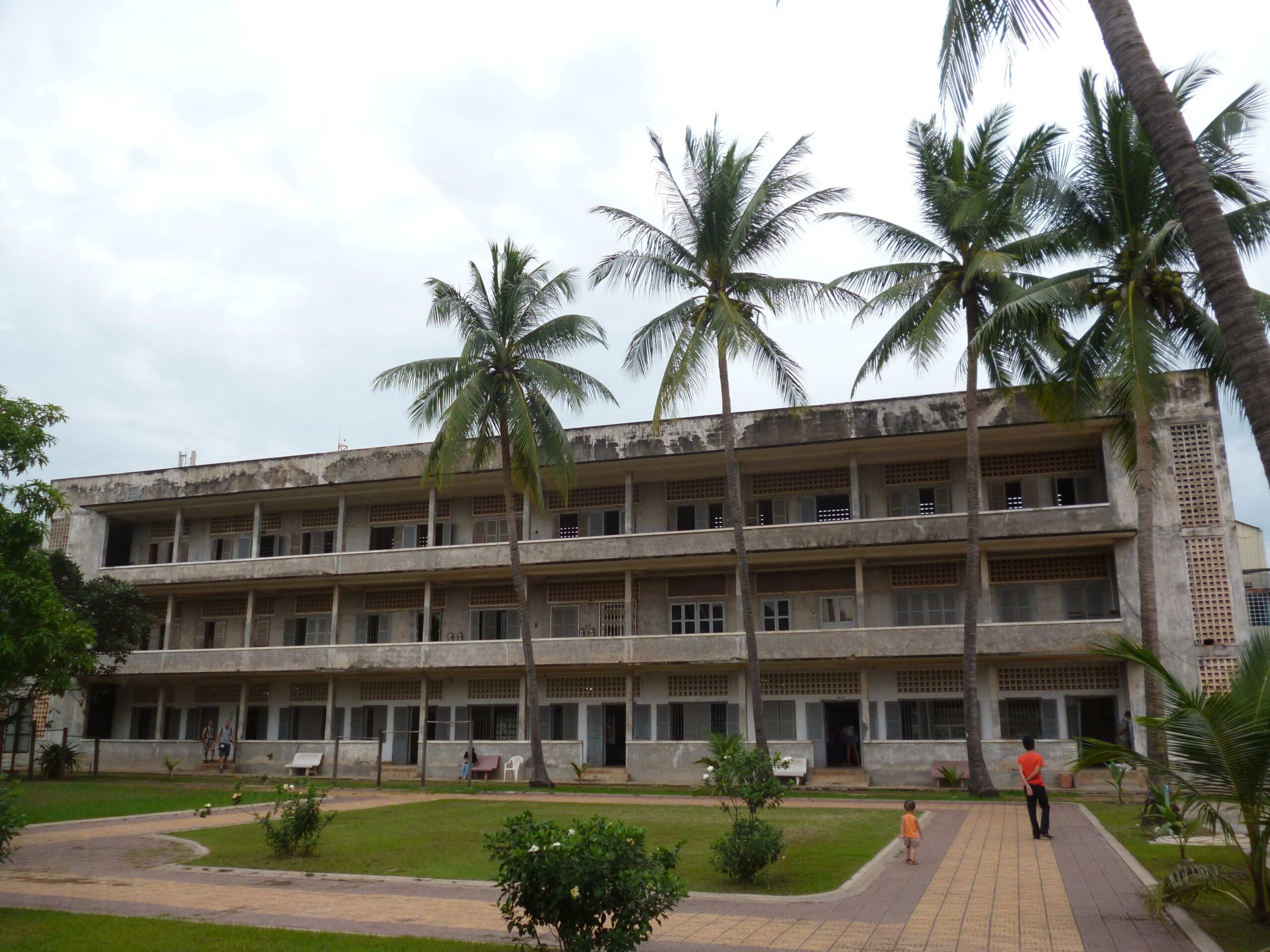

After lunch, enjoy a Mekong River boat. Boats may be seen near the Royal Palace. You can observe how different the city seems from the sea, and you’ll also travel through traditional fishing towns.
Cross the Japanese Bridge to Prek Leap in the evening and dine at one of the popular traditional Khmer eateries. Some of these include music and even stand-up comedy that is slapstick enough to make you laugh even if you don’t understand a word.
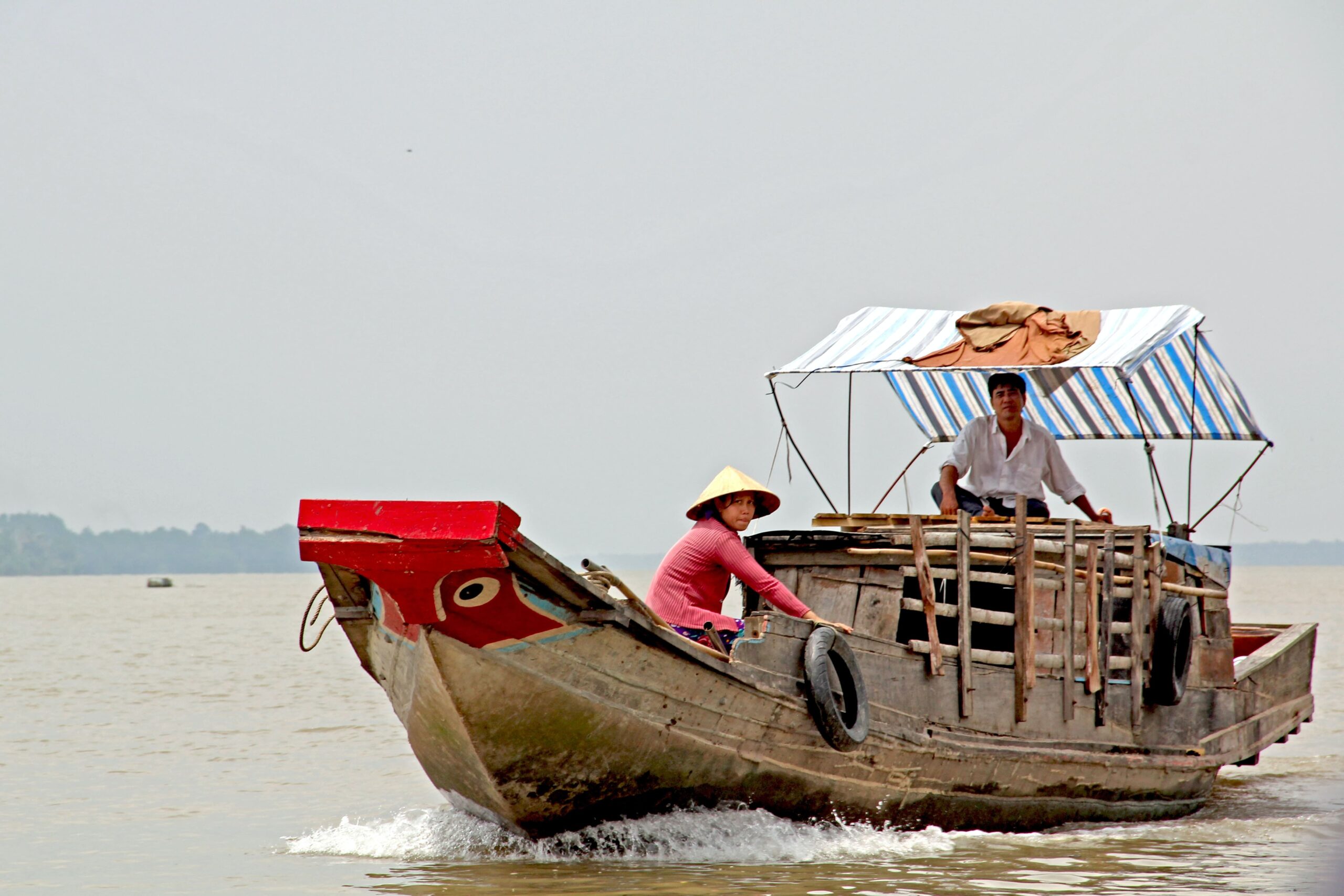
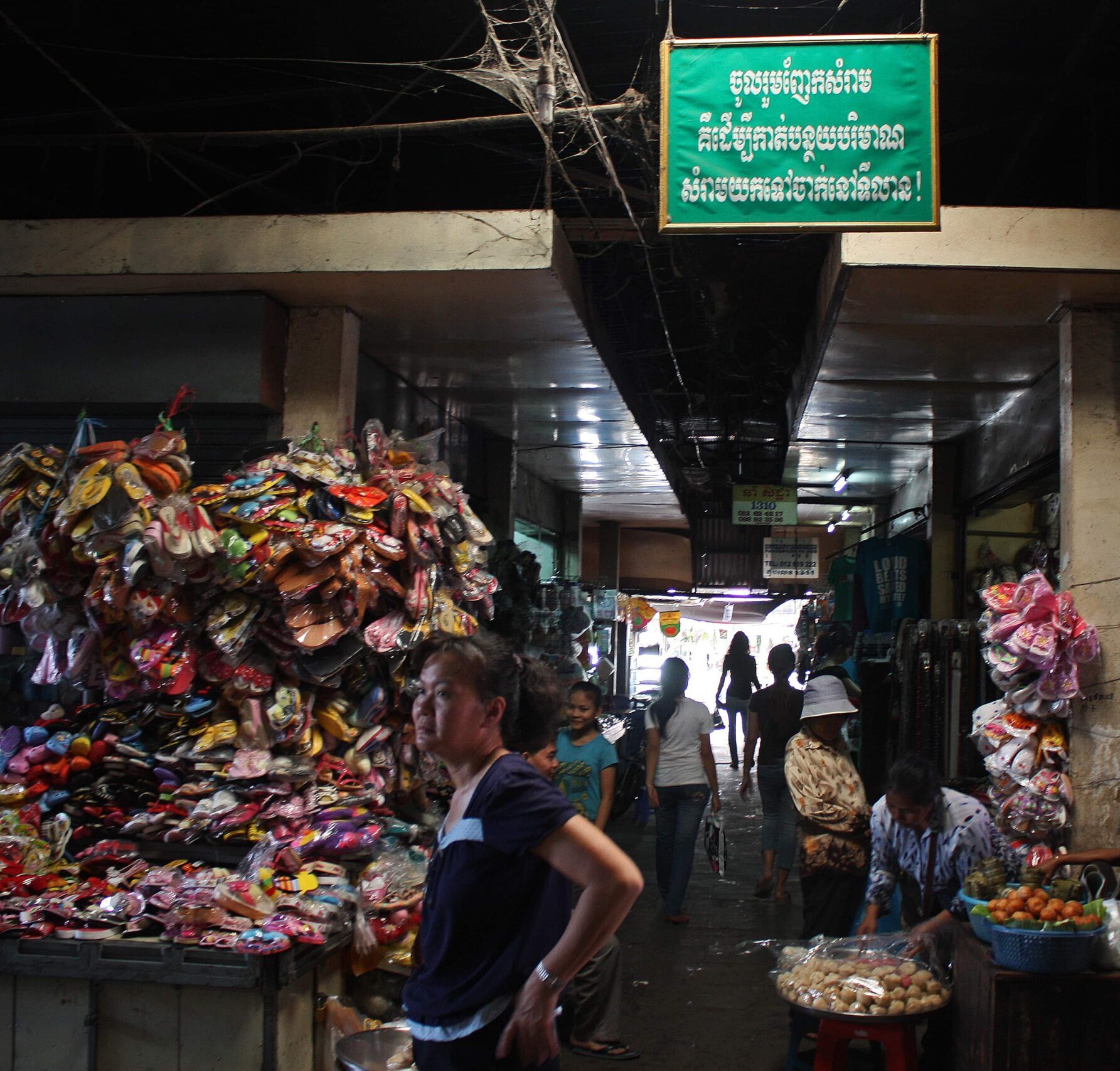
Day 5
Hit the Market
If you haven’t had your fill of shopping in Siem Reap, take a stroll through Psar Toul Tom Poung, often known as the Russian Market. You will be astounded by what you discover. Bargaining is a difficult and time-consuming game here. It is required if you want a fair price, but do so with a joke and a grin.
After lunch, board the bus to Sihanoukville, arriving in time for a cold drink while watching the sun set over the Gulf of Thailand.
Day 6
Head to Sihanoukville
Your main objective today is to unwind on the beach. Passing vendors might prepare crab or lobster right in front of you.

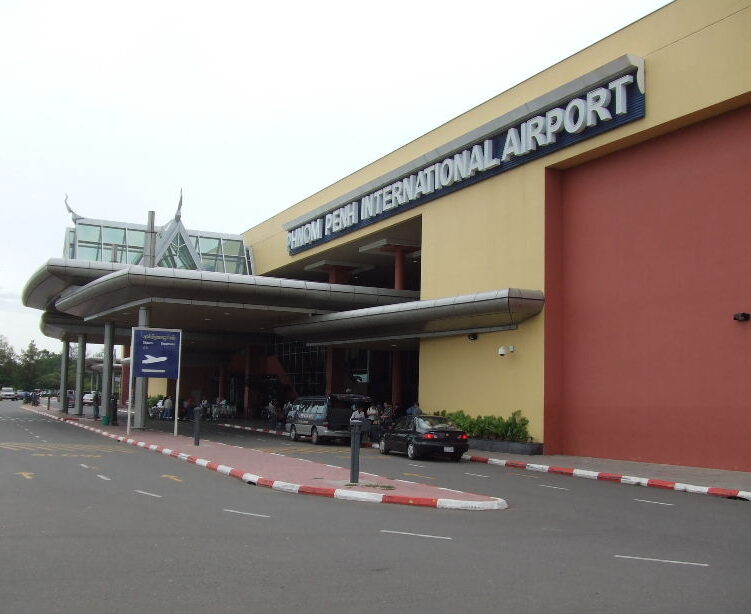
Day 7
Go Home or Go On!
If you are done with the day, take a ride or internal flight back to your departure airport whether it is in Siem Reap, or Phnom Penh.
Alternatively you can continue relaxing on the beaches of Sihanoukville, or go the short distance to Kampot to soak in the laid-back ambiance of this little riverfront town before taking the bus back to Phnom Penh for your flight out.
The Most Popular Food in Cambodia
Cambodian cuisine is greatly influenced by ingredients from both Vietnam and Thailand. Many of the recipes have a curry basis and are typically served with rice or noodles. The food is typically not hot, especially when contrasted to its Thai neighbors, however spicy dishes can sometimes be requested. The cuisine has a lengthy history and a varied spectrum of influences, but it is just recently becoming well-known outside of the nation. In reality, the only location to enjoy everything it has to offer is within the country itself.

Amok Trey
Amok is a well-known Cambodian dish, but similar dishes may be found in adjacent countries. The inclusion of slok ngor, an indigenous herb with a mildly bitter flavor, distinguishes the Cambodian version from the competition. Amok is steamed with egg in a banana leaf for a mousse-like texture, or boiled for a soupy fish curry.

Kari Sach Moan
Cambodian red curry is cooked with huge native red chilies that are extremely mild, resulting in a rich yet mellow meal. Chicken, white radish, sweet potatoes, fresh coconut milk, and kroeung are all ingredients in this delectable delicacy. It is commonly offered at weddings and other ceremonies and special events, and can be served with fresh rice noodles or baguette.

Koh Trei Svay Kchai
Koh trei, or striped snakehead fish, is one of the few fish that can walk on land. Thick steaks are cooked in a saucepan with caramelized palm sugar, garlic, and fish sauce. The meal is not stirred to avoid breaking up the fish; instead, the pot is softly shaken to uniformly spread the caramel syrup.

Sach Ko Ang
Sach ko ang, or grilled beef skewers, are a favorite late-afternoon snack that will keep you going till supper. They are typically served with a buttered baguette (a holdover from French colonization) and a delicious, green papaya pickle.

Ko Dot
Bay Ko dot is the Cambodian counterpart of roast beef, and a reputable restaurant would offer it with meat from young animals and crisp, fresh veggies. The dtuk prahok, a sauce prepared from Cambodia’s famed fermented fish paste and seasoned to taste with toasted peanuts and lime juice, is the true appeal. Foreigners are often uncommon at ko dot eateries, but don’t let this deter you. There’s a reason why it’s popular among locals!
What's the Travel Budget for Cambodia?
Flights
- Flights start at roughly $210 from nearby countries. Tickets however on average cost around $550 and can cost way more depending on which class and from which country you depart from.
Accommodation
- Nomad Backpacking style travelers can expect to spend around $190 for a week
- Budget travelers can expect to spend around $275 for a week
- Mid-range travelers can expect to spend around $450 for a week
- Luxury travelers can expect to spend around $690 for a week
Food Budget (Three meals and drinks)
- Nomad Backpacking style travelers can expect to spend around $10 per person per day
- Budget travelers can expect to pay around $16 per person per day
- Mid-range travelers on average would cost $20 to $35 per person per day
- Luxury travelers can expect to pay around $40 to $55 per person per day
Overall Budget Styles (Not including Flights, Tours, Transportation, or Car Rental)
- Nomad Backpacking style travelers can expect to spend roughly $320 for a week
- Budget travelers can expect to spend close to $450 for one person for a week
- Mid-range travelers can expect to spend approximately $730 for one person for a week
- Luxury travelers can expect to spend around $1,100 for one person for a week
Flights
- Flights start at roughly $210 from nearby countries. Tickets however on average cost around $550 and can cost way more depending on which class and from which country you depart from.
Accommodation
- Nomad Backpacking style travelers can expect to spend around $190 for a week
- Budget travelers can expect to spend around $275 for a week
- Mid-range travelers can expect to spend around $450 for a week
- Luxury travelers can expect to spend around $690 for a week
Food Budget (Three meals and drinks)
- Nomad Backpacking style travelers can expect to spend around $10 per person per day
- Budget travelers can expect to pay around $16 per person per day
- Mid-range travelers on average would cost $20 to $35 per person per day
- Luxury travelers can expect to pay around $40 to $55 per person per day
Overall Budget Styles (Not including Flights, Tours, Transportation, or Car Rental)
- Nomad Backpacking style travelers can expect to spend roughly $320 for a week
- Budget travelers can expect to spend close to $450 for one person for a week
- Mid-range travelers can expect to spend approximately $730 for one person for a week
- Luxury travelers can expect to spend around $1,100 for one person for a week
Flights
- Flights start at roughly $210 from nearby countries. Tickets however on average cost around $550 and can cost way more depending on which class and from which country you depart from.
Accommodation
- Nomad Backpacking style travelers can expect to spend around $190 for a week
- Budget travelers can expect to spend around $275 for a week
- Mid-range travelers can expect to spend around $450 for a week
- Luxury travelers can expect to spend around $690 for a week
Food Budget (Three meals and drinks)
- Nomad Backpacking style travelers can expect to spend around $10 per person per day
- Budget travelers can expect to pay around $16 per person per day
- Mid-range travelers on average would cost $20 to $35 per person per day
- Luxury travelers can expect to pay around $40 to $55 per person per day
Overall Budget Styles (Not including Flights, Tours, Transportation, or Car Rental)
- Nomad Backpacking style travelers can expect to spend roughly $320 for a week
- Budget travelers can expect to spend close to $450 for one person for a week
- Mid-range travelers can expect to spend approximately $730 for one person for a week
- Luxury travelers can expect to spend around $1,100 for one person for a week
Flights
- Flights start at roughly $210 from nearby countries. Tickets however on average cost around $550 and can cost way more depending on which class and from which country you depart from.
Accommodation
- Nomad Backpacking style travelers can expect to spend around $190 for a week
- Budget travelers can expect to spend around $275 for a week
- Mid-range travelers can expect to spend around $450 for a week
- Luxury travelers can expect to spend around $690 for a week
Food Budget (Three meals and drinks)
- Nomad Backpacking style travelers can expect to spend around $10 per person per day
- Budget travelers can expect to pay around $16 per person per day
- Mid-range travelers on average would cost $20 to $35 per person per day
- Luxury travelers can expect to pay around $40 to $55 per person per day
Overall Budget Styles (Not including Flights, Tours, Transportation, or Car Rental)
- Nomad Backpacking style travelers can expect to spend roughly $320 for a week
- Budget travelers can expect to spend close to $450 for one person for a week
- Mid-range travelers can expect to spend approximately $730 for one person for a week
- Luxury travelers can expect to spend around $1,100 for one person for a week
If you want to know what to pack, read this list below:
- This is a conservative tropical Asian country that can get extremely hot or too rainy, dress accordingly
- Raincoat or Light Waterproof Jacket
- Hiking Boots or Sturdy Sneakers (Shoes You Don’t Mind Getting Wet)
- Sunscreen
- Insect Protection – Repellent and Clothing
- Sunglasses and Sun Hat
- Water Shoes
- Beach Towels/Sarong
- Dry Bag
- Money Belt or Cross Bag
- Portable Medical Kit
- Flashlight or Headlamp
- Copies of your passport.
- Get all the needed vaccinations before traveling
- A power bank is a must in any travel.
- Always have some cash with you just in case there are no ATMs and if you are dealing with a business that solely accepts cash
- Get yourself an adapter for your gadgets
- 1 toothbrush
- 1 tube of toothpaste
- 1 razor
- 1 package of dental floss
- 1 small bottle of shampoo
- 1 small bottle of shower gel
- 1 towel
- Deodorant
- Band-Aids
- Hydrocortisone cream
- Antibacterial cream
- Earplugs
- Tylenol
- Hand sanitizer (germs = sick = bad holiday)
- A key or combination lock
- Zip-lock bags
- Plastic bags (great for laundry)
- Universal charger/adaptor
- LifeStraw (A water bottle with a purifier)
- 1 dry shampoo spray & talc powder
- 1 hairbrush
- Makeup you use
- Hairbands & hair clips
- Feminine hygiene products
Clothing For Boys
- 1 pair of jeans or khaki pants
- 1 pair of shorts
- 1 bathing suit
- 5 T-shirts
- 1 long-sleeved T-shirt
- 1 pair of flip-flops
- 1 pair of sneakers
- 6 pairs of socks
- 5 pairs of boxer shorts
Clothing For Girls
- 1 swimsuit
- 1 sarong
- 1 pair of stretchy jeans
- 1 pair of leggings
- 2-3 long-sleeve tops
- 2-3 T-shirts
- 3-4 spaghetti tops
- 1 light cardigan
Want to plan your own trip, here are some of the best resources that can help you
- Skyscanner – They search small websites and budget airlines that larger search sites tend to miss. They are hands down the number one place to start.
- Momondo – This is another favorite flight search engine because they search such a wide variety of sites and airlines. Always check here too.
- Booking.com – The best all-around booking site that constantly provides the most affordable and lowest rates. They have the widest selection of budget accommodation.
- Couchsurfing – This website allows you to stay on people’s couches or spare rooms for free. It’s a great way to save money while meeting locals who can tell you the ins and outs of their city. The site also lists events you can attend to meet people (even if you’re not staying with someone).
- Intrepid Travel – If you want to do group tours, go with Intrepid. They offer good small group tours that use local operators and leave a small environmental footprint.
- Grassroots Volunteering – For volunteering, Grassroots Volunteering compiles a list of good local volunteer organizations that keep the money within the community.
- Get Your Guide – Get Your Guide is a huge online marketplace for tours and excursions. They have tons of tour options available in cities all around the world, including everything from cooking classes, walking tours, street art lessons, and more! It has the world’s largest collection of things to do with more than 30,000 activities in 7500 destinations.
- SafetyWing – Safety Wing offers convenient and affordable plans tailored to digital nomads and long-term travelers. They have cheap monthly plans, great customer service, and an easy-to-use claims process that makes it perfect for those on the road.
- Trip Advisor: Check the reviews and then book your accommodation. TripAdvisor is where you go when you want to compare prices with multiple accommodation providers.
- VRBO: is the main search engine to use when you are looking for a home or apartment rental. It can sometimes be cheaper than hotels and it is the best way to stay in areas that offer a more local feel.
- Hostelworld: With one of the largest databases of hostels in the world, Hostelworld is the go-to site when you are looking for budget accommodation.
- Rome 2 Rio: If you want to see how to get somewhere by plane, train, bus, ferry, or car Rome2Rio lays it all out for you as well as related costs.
- World Nomads Insurance: When traveling you should always have travel insurance. We have found the best bang for your buck is by far World Nomads.
Final Thoughts on Cambodia
Cambodia has a sophisticated and rich tradition that is seen across the country, with its former empire, prior occupations, stunning and distinct Angkor Empire landmarks, genuine hospitality, vibrant festivities and dances, and a breathtaking environment. Cambodia is an excellent destination for anyone looking for an off-the-beaten-path experience in a popular country, filled with beautiful parks. Cambodia’s beauty is spectacular, with its amazing national parks, wildlife, and breathtaking views. Would you visit Cambodia?
Have you been to Cambodia? Please leave your opinions in the space below.